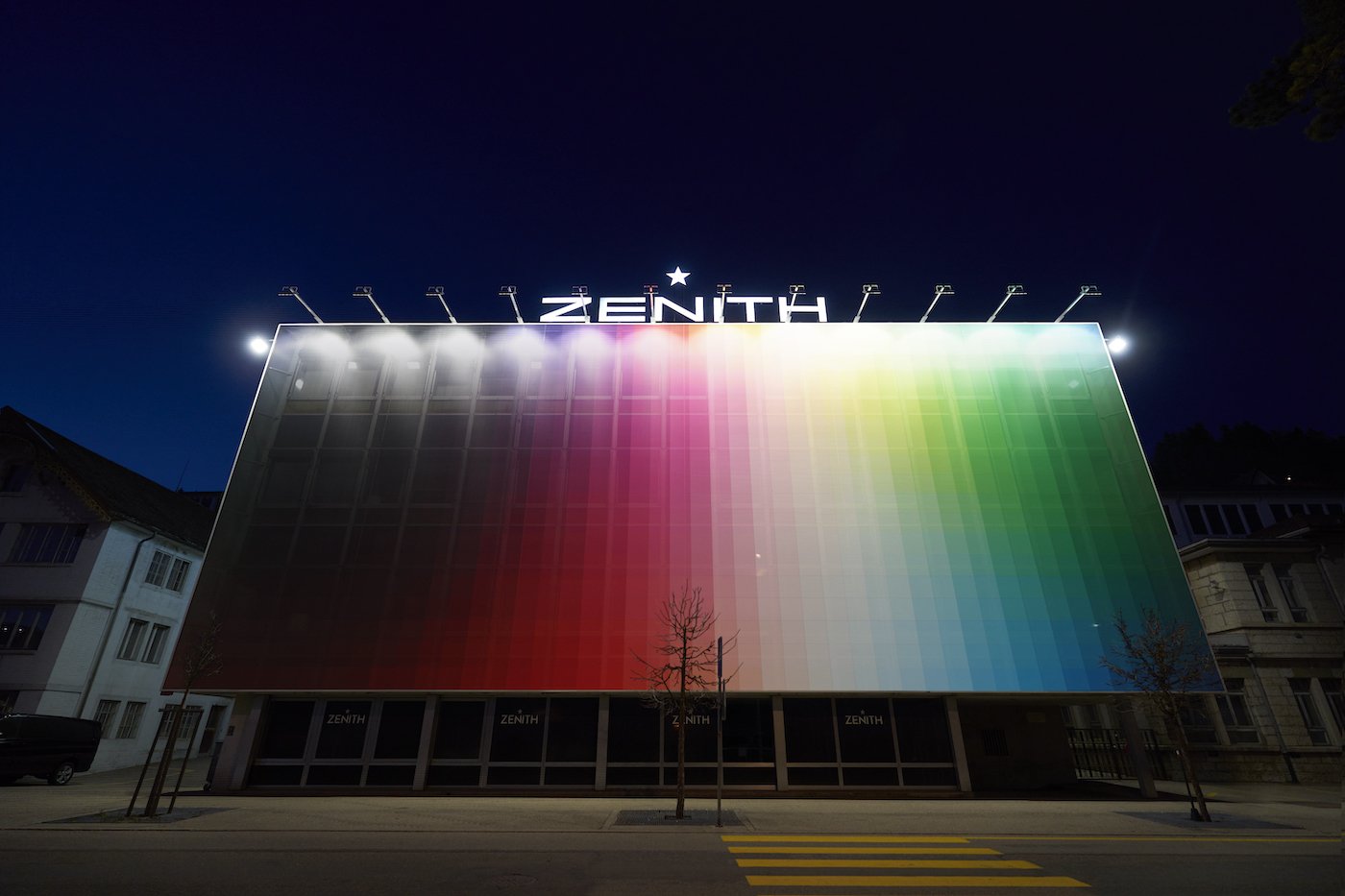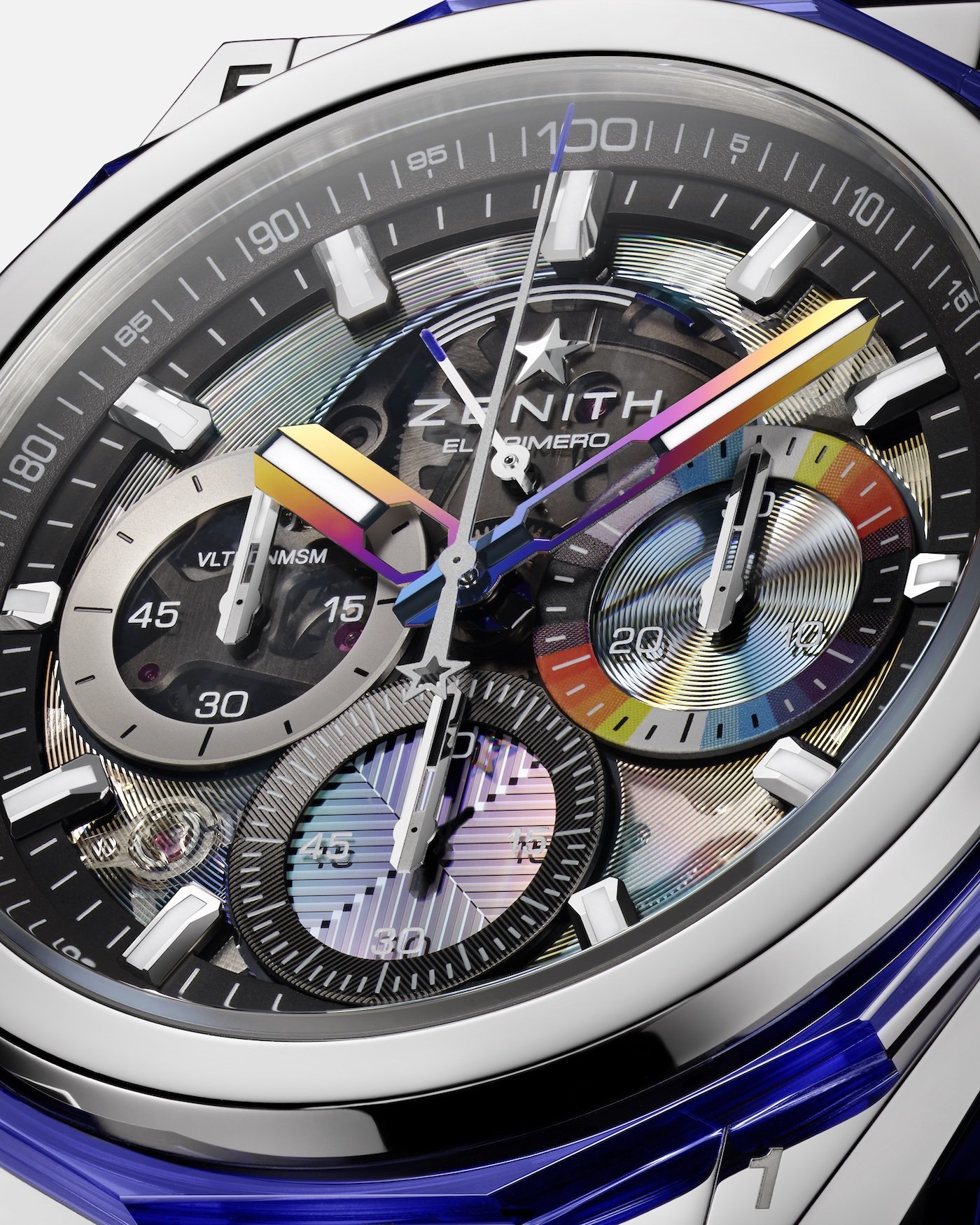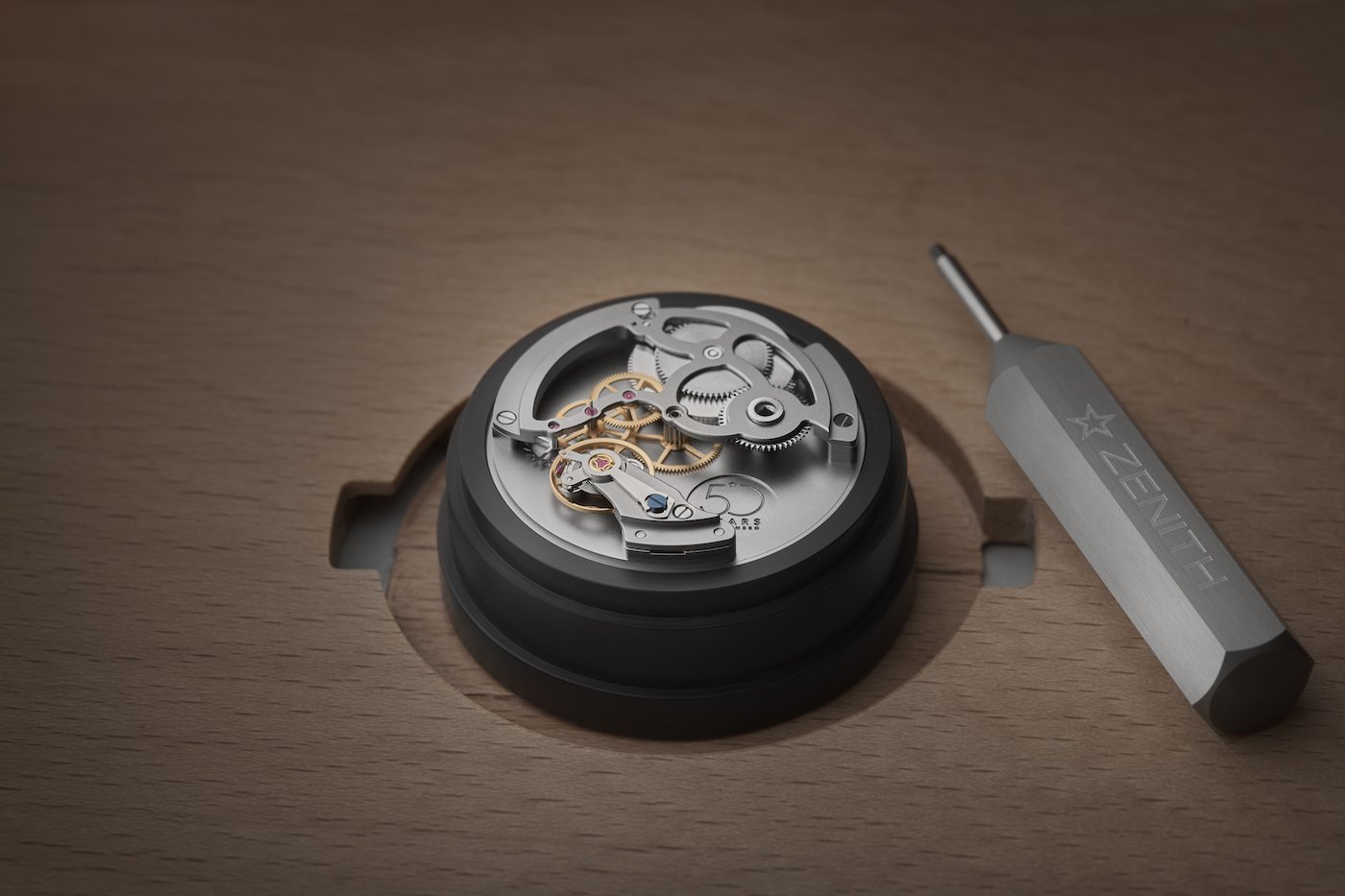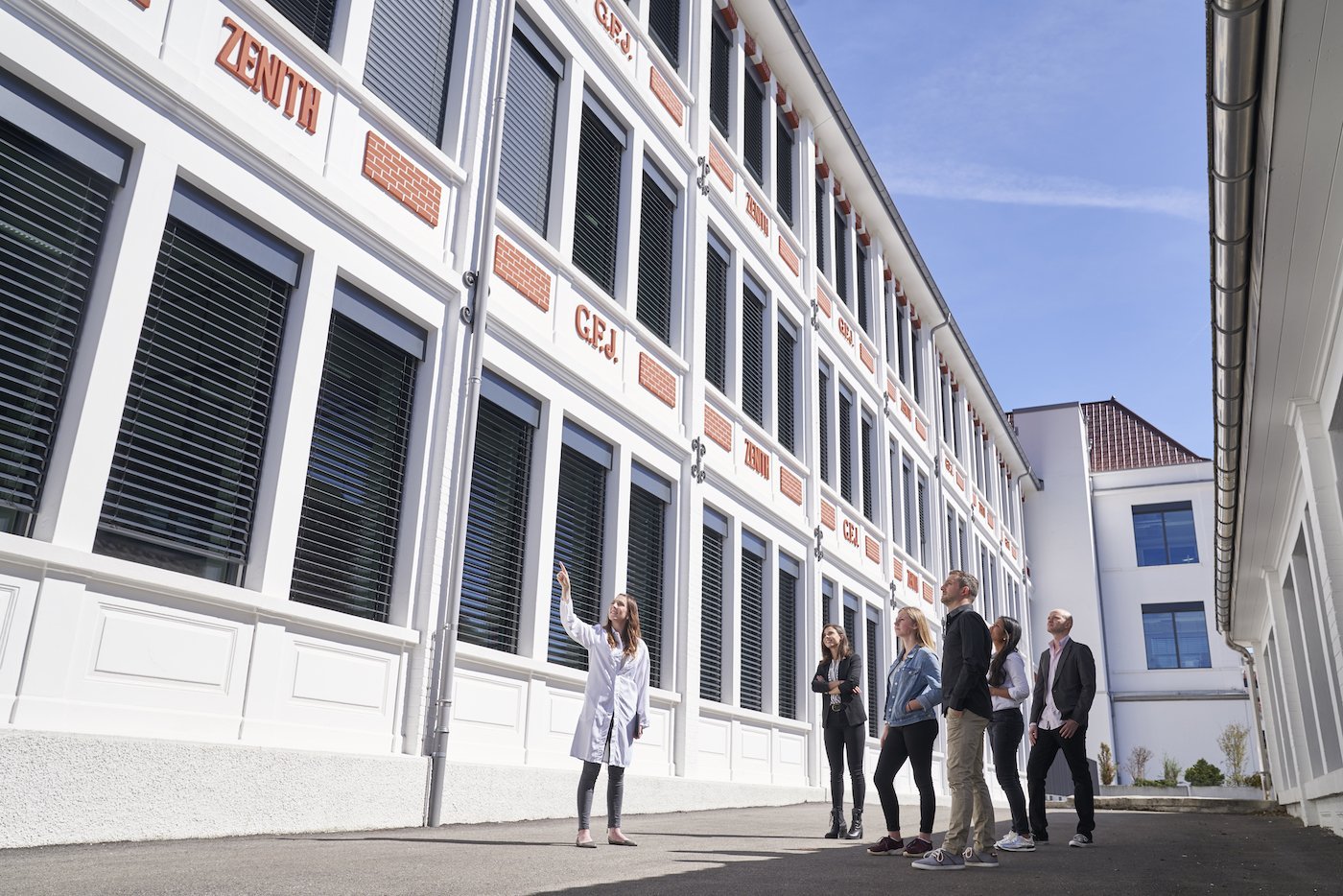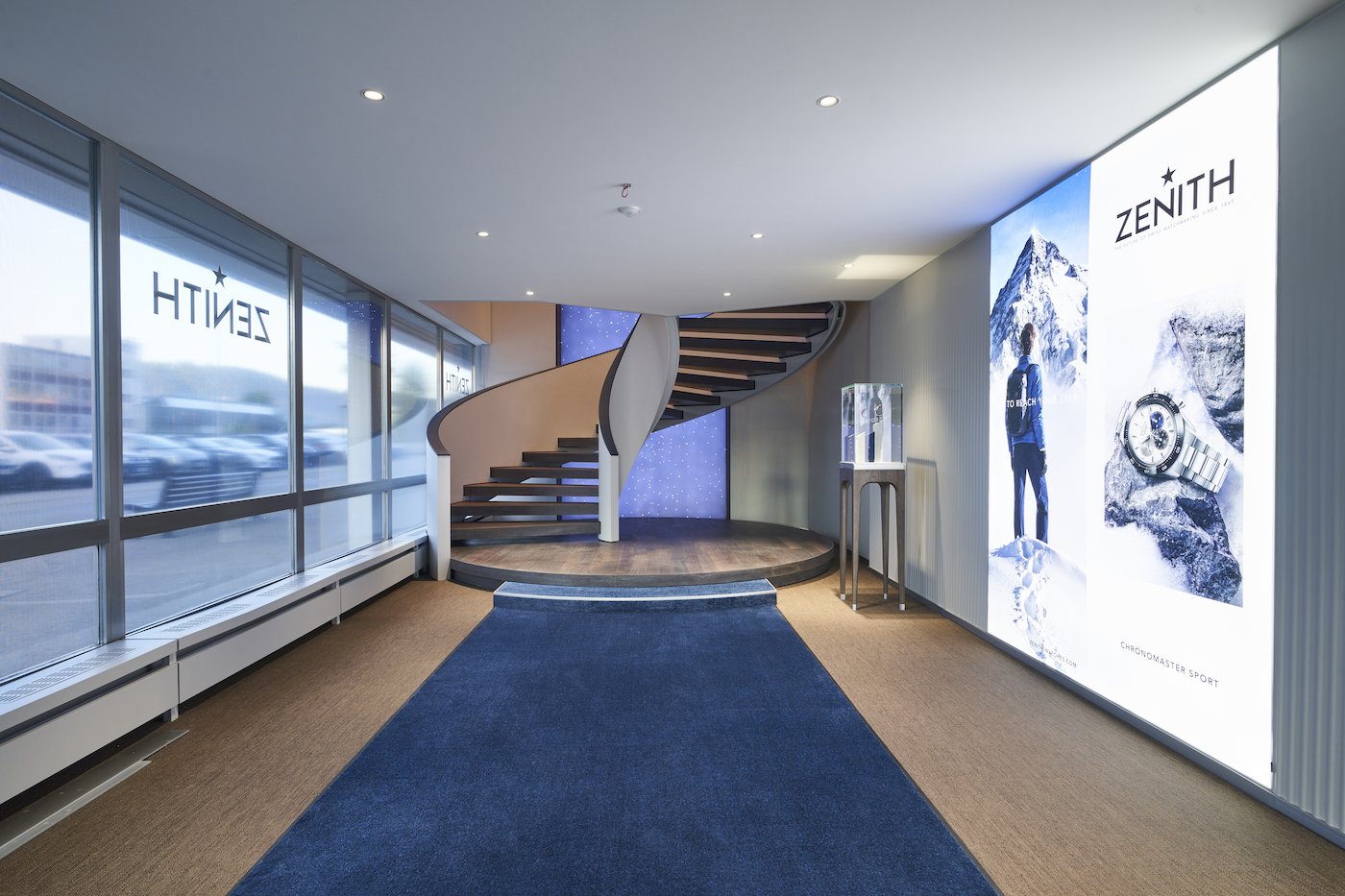hen LVMH appointed Julien Tornare in 2017, it took a gamble on youth. The new CEO of Zenith was forty-four. Founded in 1865, the company he now helmed was three and a half times his age. Six years on, the gamble has paid off, with sales that have more than doubled.
After cutting his teeth at Raymond Weil, Julien Tornare joined the Richemont group as Asia-Pacific director for Vacheron Constantin. He then traded Hong Kong for Le Locle, tasked with reviving Zenith, a Manufacture to which history hadn’t always been kind, and which was struggling.
LVMH allowed Tornare the luxury of taking a long-term view. He succeeded in delivering results much faster than that, and this despite the Covid pandemic. What is the secret of this former champion water-skier? And that of a Manufacture whose history is a succession of setbacks and comebacks? We met Julien Tornare in his office in Le Locle.
Europa Star: Morgan Stanley reports that Zenith’s sales have gone from CHF 75 million when you took over as CEO to CHF 120 million. How did you manage an increase on this scale after just six years?
Julien Tornare: First of all, those numbers are wrong (laughs). That report is far too conservative. The bank has actually lopped off part of our revenue. When I started, Zenith had just under 80 million in sales which we have more than doubled. All that matters is that our owner knows what the real numbers are. We have restored the brand’s financial health. Both 2021 and 2022 were record years for Zenith. 2023 is along the same lines but in a slightly more challenging context.
How did you manage that?
When I arrived in 2017, I took time to get a global view of the situation. I decided to keep what I considered to be the most pertinent aspects – the Manufacture’s history and heritage – while bringing the brand into the twenty-first century. My predecessors did some good work and I’ve tried to build on that while striking a balance between past and present, between conservative Zenith and innovative Zenith. From 2017 until 2019 we rejigged the fundamentals, which ranged from the presentation boxes to the boutique concept, as well as the website which could only be accessed from a computer. At end 2019 we celebrated the 50th anniversary of the El Primero movement, an opportunity to express ourselves with great force. We tracked down the people who had worked on the El Primero with Charles Vermot, we did millions of things, and by Dubai Watch Week in January 2020, we really felt the brand was regaining its lustre. Then Covid happened. With hindsight, this period forced us to accelerate the restructuring process. It was time to wake up the brand.
-

- Julien Tornare
What was the first challenge you faced?
As always, it’s the men and women who make a brand what it is. We had to remotivate teams. Here I was, this guy from Geneva who’d spent five years in New York and seven years in Hong Kong. It was up to me to adapt, to reconnect with my Swiss roots, talk to people, let them know I wasn’t there to take their job away but to work with them at this magnificent brand, a brand I believed in. The toughest part was getting everyone onboard. I was upfront with teams. I explained my vision for the brand in the hope they would support me. The vast majority of staff stayed on. There is a newfound tranquillity and that is one of my greatest satisfactions. Teams are ambitious, dynamic, united. They believe in the project.
What would you say was your greatest asset?
During my second week there, I had a chat with Jean-Claude Biver [interim CEO of Zenith]. He asked me, probably in a provocative way, what I thought of the fact we only used in-house movements and the El Primero, a calibre so famous it almost overshadows the brand. I told him I’d come from a Manufacture that had gone to great lengths to only use movements it made itself, that I thought this was a good thing and we should build on it. The El Primero’s fantastic reputation was a help, not a hindrance! How many brands would love to have such a legendary calibre on their books? It’s not because the brand was lacking in terms of awareness and marketing that we should be taking it out on the El Primero. We need to consolidate the brand and, alongside the El Primero, make it stronger. Tomorrow’s Zenith will be a combination of the two. So to answer your question, my greatest asset was this legendary movement, still used in its original form, and this Manufacture, a tool so few brands possess.
You belong to a generation of CEOs whose leadership is more horizontal than vertical. Does this contribute to the brand’s success?
I’m sure it does. When I arrived, I was told Zenith was a complicated brand. Morale was low and there’d been a high level of burnout. I chose a more horizontal management style which teams immediately adopted. Now, whenever there’s a vacancy at Zenith, we’re inundated with applications. You wouldn’t believe the number of people who want to work here! At 44, I was one of the youngest CEOs. Now I’m 50 and nothing has changed. My door is still open. We work in the luxury industry and wherever there’s the word “luxury”, often there are inflated egos. This isn’t how it works at Zenith and I think this has been instrumental to the brand’s success.
Zenith will be 160 in 2025 yet it’s a truly modern brand. How do you explain this eternal youth?
The brand has gone through numerous stages. It’s a name that inspires genuine passion. The people who work here have a strong attachment to the Manufacture. You feel a sense of pride, a sense of belonging. We have the lowest staff turnover in the industry. Employees share in the success we are enjoying today and this has helped the brand to survive, even during some difficult years. Let’s not forget that Zenith is part of a group, LVMH, that has always supported us and allowed us to develop. When I was appointed, I was told that numbers shouldn’t be a short-term objective and that the right numbers were the result of vision, applying this vision, and good work. I thought that was a fantastic attitude. I was given time to do the job properly and you can’t put a price on that.
You could have taken the nostalgia route and focused marketing on the El Primero, which you didn’t. It feels more like you’re in “senior startup” mode.
Absolutely. From the very beginning, I wanted to instil a startup culture into what was then a 152-year-old company. I asked young talent to do some out-of-the-box thinking. One of the team members dealing with social media, this young guy, about 25, came into my office one day and suggested we work with a street artist called Felipe Pantone. I’d never heard of Felipe Pantone but I met him, he suggested a partnership, and I asked this 25-year-old, who was doing something else entirely, to manage the project. Which he did, brilliantly. The collaboration with Felipe Pantone was a phenomenal success. It was like having an entrepreneur inside the company, which is the mindset I wanted teams to have. Another example: Romain Mazzilli, who was organising training for our watchmakers, came up with the idea for the Watch Clinic [itinerant watchmaking classes] that we now take all over the world. You have to believe in a project, create the right environment for it to grow and give people the means to make it happen.
-

- Defy Extreme Pantone Edition
A kind of participative management?
You can’t know everything and be good at everything. You have to surround yourself with talented people and encourage them to be creative. A leader is someone who recognises that they have an extraordinary team and who makes sure they know this. Success is a joint achievement but it needs the right atmosphere. There are still companies whose management use bully tactics, even though we’ve known for forty years this doesn’t work. Some of the larger companies hire a Chief Happiness Officer. We’ve don’t have the resources for that. More to the point, I think the job of fostering a positive environment comes down to the executive committee and myself. It doesn’t mean we can’t have high expectations of our staff. It’s about creating an environment where people are happy to come to work.
-

- Zenith Watch Clinic
When I interviewed auctioneer Aurel Bacs about the secondary market, I asked which brands to look out for, apart from the usual Patek Philippe, Audemars Piguet, Rolex and François-Paul Journe. He answered Zenith. Do you agree?
Yes. Zenith has been underestimated and undervalued for a number of years. It needed a new direction, a new dynamic and a new equilibrium. Zenith will evolve in a really positive way over the coming years.
What does the secondary market represent for Zenith and how do you approach it? You are pretty much the only Manufacture to have archives that go back to its very first watches and to be able to repair any watch you ever made.
We are incredibly lucky. Firstly and significantly, Zenith has an uninterrupted history and has occupied the same site since 1865. We can indeed repair any watch all the way back to 1865. Some will be more difficult to restore than others, we may have to build special tools, but we are capable of repairing every watch we have ever made. Every Zenith watch contains a Zenith movement. We do not use third-party movements. We are proud to be one of the last four or five major brands, brands with a certain volume of production, that still make all their movements. We can, consequently, take charge of pre-owned Zenith watches. We’re not yet in a place where we are selling vast quantities of vintage Zenith in our boutiques. We let the natural market, auctions, resale sites, etc., deal with second-hand. It works well.
Having said that, we do highlight certain models through our Zenith Icons programme, launched in 2019 as part of the El Primero’s fiftieth anniversary celebrations. We source iconic 1960s and 1970s models, restore the movement – leaving the patina intact - authenticate and certify each one, then sell them with a three-year warranty through our own channels. It’s a wonderful tribute paid to our customers, our collectors and the brand’s history. Anyone wishing to purchase a vintage Zenith watch can do so with their mind at ease, through the company. To be honest, it’s also a way of telling customers who buy a contemporary watch, “See how we take care of a watch that’s fifty or more years old. Your watch is in safe hands for years to come.”
Anyone buying a Zenith watch today can rest assured they will be able to pass it on to future generations, not wishing to paraphrase the Patek Philippe ad. We have the good fortune to belong to a group that is financially sound. We will look more closely into the secondary market and will be making some big announcements on this subject for Zenith’s 160th anniversary.
Zenith is truly a survivor. The brand came within inches of disappearing in the 1970s and wasn’t in the best of health when you took over as CEO. What’s its secret? And yours?
I think Zenith’s secret is its resilience in the face of some traumatic episodes. I had the good fortune to meet the people who worked on the El Primero. They told me what it was like when the new American owners arrived and told them to stop producing mechanical movements and switch to quartz. Watchmakers love what they do and for them it was heart-wrenching. But they obeyed orders. Of course, we now know about Charles Vermot’s heroic decision to save the tools and machines needed to make the El Primero. Zenith is the proof that what doesn’t kill you makes you stronger. I am convinced Zenith will never crumble, whatever the circumstances. As for my secret, it all comes down to passion. We’ve been through some hard times, we’ve been through Covid, and the team has emerged stronger than ever. It makes me very proud. I have my strengths and weaknesses but I’m someone who brings people together and that, in my eyes, is a manager’s role. In sport, some teams triumph and others don’t. Team spirit makes all the difference. You have to bring everyone together behind a common goal and build a strong team.
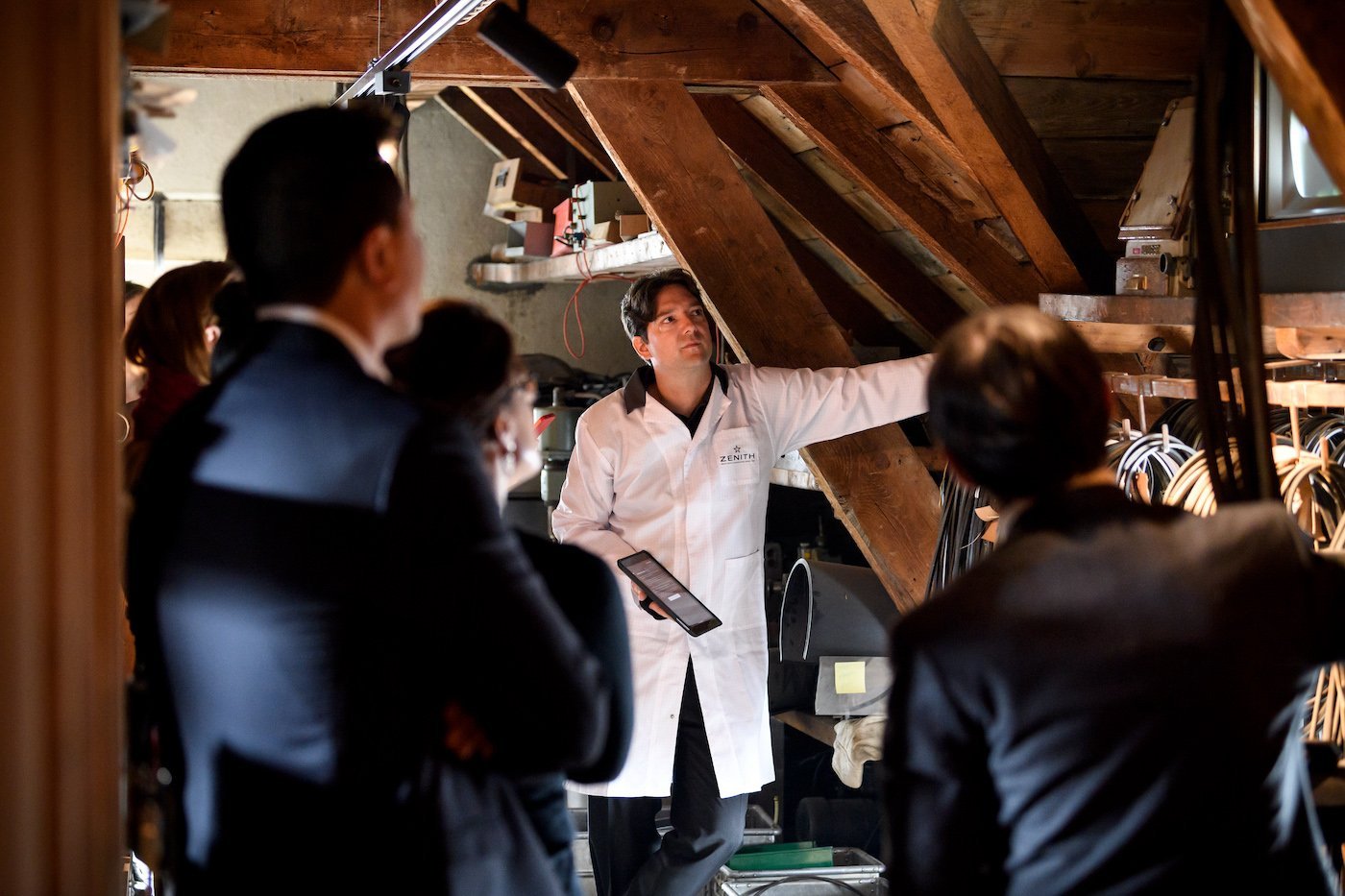
On the subject of sport, you were the Swiss water-ski champion in 1988. Has that helped you as a manager?
I think sport has helped me on several levels. Discipline and effort are two things I’ve learned through sport. Getting into freezing cold water, training hard all year round, driving 500 kilometres to take part in a competition, falling at the first turn and driving 500 kilometres home with your parents and your disappointment for company. Competitive sport teaches us how to cope with failure but it also gives us a taste for success. I felt such a rush of emotion that day in 1988 when I saw the Swiss flag being raised and heard our national anthem. It’s something I try to teach my children, including how to deal with difficult moments in life.
Zenith is the only brand that can use the word “Pilot” on its dials. At Watches and Wonders you revealed the face of the new Pilot line, which is a departure from the usual vintage style. Why this change?
When I arrived at Zenith, we’d relaunched the Defy line as the incarnation of the twenty-first-century watch, giving the brand a modern edge. We did the same thing with the remastered Chronomaster in 2021. Until then, the Pilot had been looking backwards. We decided to bring it up to date. This is also why we created the Revival line across all four collections. It’s kind of a playground for models that are very close to past releases, in the Defy, Chronomaster, Pilot and, soon, Elite line, which is Zenith’s most classic collection. We’ve already turned our attention to this classic segment with the launch, in 2022, of ten chronometers driven by calibre 135-O in collaboration with Kari Voutilainen. We’ll also be delving into the 1950s, when Zenith was producing watches with the most amazing designs. So we’re not turning our back on vintage, simply it’s now through this multi-collection approach.
-

- The new Pilot line
What differentiates the new Pilot?
We took the characteristic features of a Pilot watch - the flyback function, the instantaneous date, the oversized numerals and the dial inspired by an aircraft fuselage – and gave them a more contemporary style.
The story of Charles Vermot saving the legendary El Primero movement would make an amazing film. Is this something you’re considering for the brand’s 160th anniversary? Have any filmmakers pitched the idea?
This is something I’ve been wanting to do pretty much since I arrived at Zenith. Four years ago we welcomed a group of American visitors that included the director David Cronenberg. I showed him the attic where Charles Vermot hid the tools for the El Primero movement and asked him if it could be a subject for a film. He thought it was an amazing adventure but it would need to be fictionalised in some way if it were to become a film rather than a documentary. It’s such a great story, we have to do it! The watchmakers who were part of this moment, now all in their eighties, have so many recollections, so many vivid memories of what happened. We have to find the time and the resources to make this film, which I’m certain would interest a wide audience. In fact I’m putting it out there: any producers reading this, I want to make a film that would cement this episode in history and put Swiss watchmaking at the heart of a commercial film.
Distribution and sales have evolved tremendously in the space of a few years. What room is there for e-commerce and what will tomorrow’s boutiques look like?
Nobody can claim to be a modern, dynamic, twenty-first-century brand without e-commerce, whatever the product or the price point. The numbers show that it works. You can generate a positive customer experience and service online. I’ve had video meetings with people who had bought a watch online and had questions about the brand. No-one was more surprised [to see me] than they were. Given my schedule, there’s very little chance they would bump into me in a boutique on the other side of the world.
E-commerce is a way for customers who don’t live near a point of sale to still purchase one of our watches. I’ve had a lot of feedback from customers confirming this. An American in Kansas City and an Australian from Darwin told me the same thing, that they wouldn’t have waited until their next trip to New York or Sydney to buy their watch. I asked them why and they replied that, when you really want something, you want it there and then. Otherwise, the wanting goes away. No matter where you are in Switzerland, there will always be a point of sale within a 25-kilometre radius but imagine what it’s like for people who live in these huge countries, who have to travel thousands of kilometres to their nearest store.
As for the in-store experience, we still have some way to go. Tomorrow’s boutique must be an extension of the Manufacture, and on a side note we have completely reworked the content of our Manufacture tours. And this is just the beginning. Nothing can beat the experience of actually coming to the Manufacture, but even so we must be capable of creating, both online and in the boutiques, an extension of this Manufacture experience, of relaying what we offer here. This is how you create emotion and, at the end of the day, emotion is what we sell.
What changes have you made in the boutiques so far?
We present our Zenith Icons, offering customers the opportunity to acquire a revised, restored and certified vintage Zenith watch, although this is only a small collection. More importantly we use these Icons to tell the Zenith story. We can’t recreate Charles Vermot’s attic inside the boutiques but we can use tools to give people a sense of this story. Visitors to the Manufacture tell us they can understand the emotion behind Zenith and the passion that motivates our teams. My aim is to recreate this through travelling exhibitions.
-

- Zenith Icons presentation box
Coming back to e-commerce, online sales surged during Covid. What’s the situation now?
We’re at 6% of sales but this figure will correct itself for two reasons. Firstly because Covid boosted online sales and secondly because we’ve grown a lot so the proportion will automatically decrease. But e-commerce is part of the future so I expect these numbers to go up again.
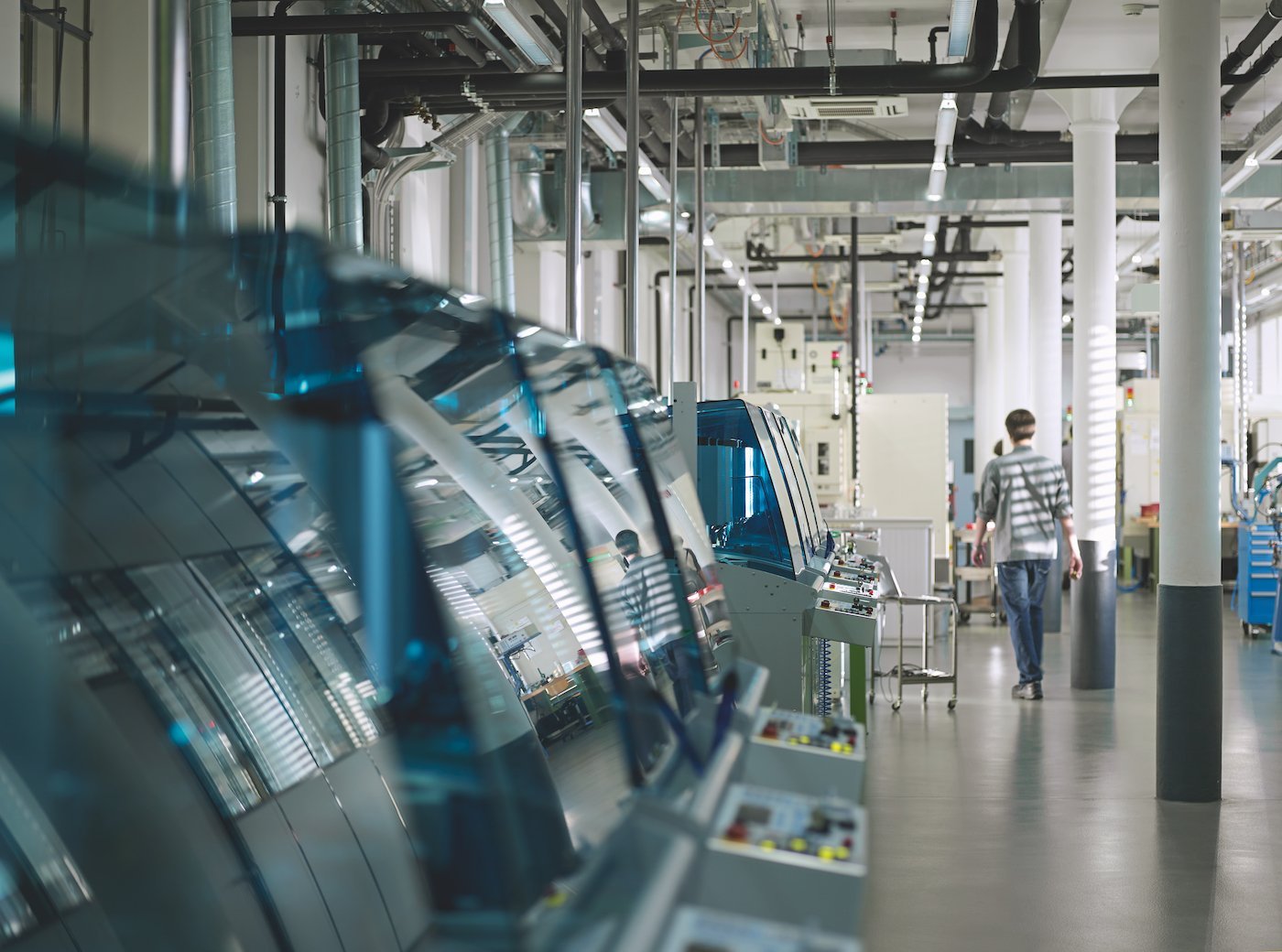
What is the average age of the Zenith customer?
It was 46 when I started and now it’s 37. That’s nine years younger in six years, which is pretty amazing!
Why do you think that is?
Our customers in China tend to be younger, which brings the global average age down, but more generally we’ve been working on the brand’s “cool factor” by being more disruptive. Zenith has existed since 1865. We have a superb heritage, are still based at our original premises and make all our movements ourselves. These are fantastic assets but not necessarily exciting for younger generations, hence we’ve decided to express these elements in a contemporary way.
There’s a tendency in the watch sector to draw a dividing line between brands that have a long history and heritage, and younger brands that go against the grain, but this doesn’t have to be the case. Zenith has a rich history, it has its Manufacture and its iconic El Primero movement, but it must also speak today’s language and make people want to wear a Zenith watch. In fact this is the challenge for the Swiss mechanical watch industry as a whole: respect core values and at the same time appeal to younger generations.
How do you create new designs, reissue vintage models and update existing collections all at once?
Through teamwork and lots of discussion. One of the golden rules is to always start from the past, who we were, what we’ve done, and look at how it can be reinterpreted. Sometimes this means moving away from the historic model, referencing certain features from a fresh perspective. The Chronomaster Sport I’m wearing is inspired by the A277, introduced in 1965 and the first with a black bezel, the De Luca, released a couple of years later, and the Rainbow. Seeing them together allows us to explain the thinking behind the stylistic evolution of this new design. It took four prototypes before we were satisfied we’d achieved the right balance of historic cues and the fresh spirit we wanted this watch to have.
-

- Chronomaster Sport
What are your ambitions for Zenith?
The first, which I’m delighted to have achieved, is to have put this fantastic brand back on track in terms of volume of business, profitability, financial health, all the key performance indicators. Teams are united behind the brand. Zenith has immense potential. We have growth objectives for the next five to six years but, however great demand may be, we are not looking for huge increases in sales volume. We will continue to make all our movement at the Manufacture. We’re more inclined to increase finish quality and price ranges. When I was young, I didn’t attempt certain things because I was afraid I might fail. We were brought up to believe that failure is bad, success is good, but that’s not how it is. Zenith will grow over time, with nothing but the sky for a limit!
FAST FACTS
1972: Born August 9th in Geneva
1988: Swiss water-skiing champion
2004: Marriage
2006, 2009, 2012: Birth of his three children
2017: Appointed CEO of Zenith


